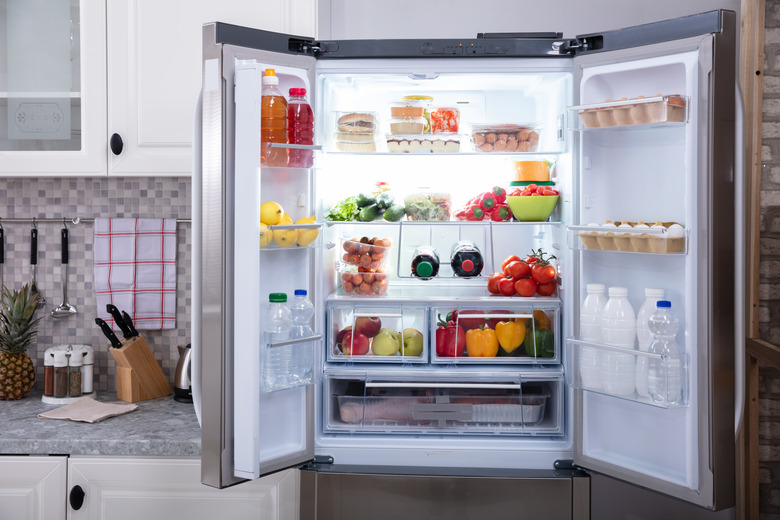How To Clean Refrigerator Door Seals
The refrigerator gets a lot of use from dawn to dusk. The weekends bring on more opportunities to swing open the appliance door and grab a snack at all hours of the day and night. All that opening and closing of the heavy door can lead to issues with the pliable rubber seal.
If the refrigerator door doesn't close properly or if food isn't staying cold, particularly items in the door shelving, then it could be due to a bad seal. Cleaning the refrigerator door gasket can often fix most of the issues. The refrigerator seal needs to be cleaned regularly to keep it in good condition and hep in its ability to seal well.
Tip
Bleach and other harsh detergents can harm a plastic refrigerator seal.
Mold on Refrigerator Gaskets
A whiff of acrid and moldy scents that emit from a refrigerator could be caused by mold growing in the seal of the appliance's door. Mold on the refrigerator gaskets can grow quickly and undetected. If mold is on the refrigerator gasket, stop it before it becomes a major problem with a few basic cleaning solutions.
A safe and effective cleaning solution is to mix 1 quart of warm water with 1 tablespoon of baking soda to clean, deodorize and sanitize the gaskets. Make sure to spread the accordion style refrigerator door seal to get into the nooks and crannies. Wipe the door seal free of the baking soda mix so that it doesn't create pockets of dried paste within the seal.
What Not to Use
Cleaning refrigerator door seals can seem simple, but the wrong types of cleaners can ruin the plastic and the seal. Products that contain petroleum distillates, bleach or ammonia can damage the plastic of the refrigerator door's gasket and should be avoided, according to GE Appliances.
Diluted bleach in small amounts can be used on refrigerator seals that are covered in mold. However, this can have a negative effect and break down the plastic or erode an already compromised refrigerator door seal. If you decide to use bleach to clean a grungy plastic seal, then don't allow it to sit on the material for longer than necessary.
Thoroughly wipe any cleaners that you use from the seal with warm water. Wipe dry and make sure that no residue is left behind before calling the cleaning job complete.
Hydrogen Peroxide to Clean Refrigerator
If the seal is still grungy or has stains from food and mold growth, then a good dousing of a common household cleaner can spiff up the dingy refrigerator door gasket. Using the effective antibacterial hydrogen peroxide to clean the refrigerator is an easy, affordable and safe choice. It easily removes stains and can be combined with mild dish washing liquid for an even more effective stain and odor remover.
How to Clean Stuff recommends spraying the hydrogen peroxide in a fine mist so that it can find its way into the recesses of the refrigerator door seal. Spray the seal liberally and let the hydrogen peroxide sit on the gasket for a good 15 minutes. Use a cotton swab to dig into areas that are caked with dirt or truly stained.
